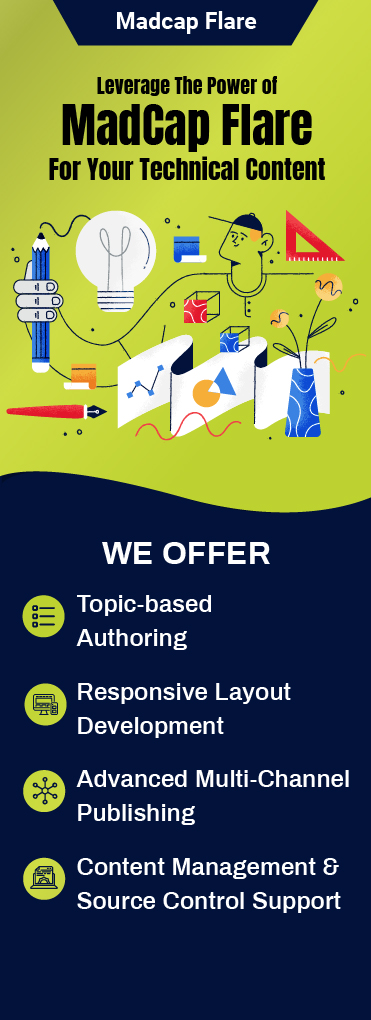The MadCap Flare 2018 r2 brings an array of features and enhancements. The update will give you more control on the way you create, manage and deliver different content.
One interesting update out of the lot is the Salesforce Integration Connector. This connector allows you to publish Clean XHTML outputs directly into Salesforce Knowledge and proved to be a game changer.
The 2018 release also allows you to exclude JavaScript files from your HTML 5 output and the version of jQuery used for HTML5 has been updated to 3.3.1.
Authors working in Flare can publish single-sourced content as articles in Salesforce. They don’t have to copy, paste, and reformat content manually.

Stylesheets: Salesforce doesn’t support external stylesheets and JavaScript. You must only use Clean XHTML target type to publish content.
You should also consider converting the stylesheet styles into inline styles. You can define them with the same classes inside Salesforce as you did in Flare.
Creating Targets: When creating Clean XHTML target, you should enable the “Convert stylesheet styles to inline styles” option by selecting it from the General tab of Target Editor. This ensures a well-maintained styling when content is published in Clean XHTML output to Salesforce.
Source File: Keep the source content in Flare only and do not format or edit any content—text or images—inside Salesforce as it may produce errors when publishing content from Flare and you will have to repeat the process from scratch.
This manual reformatting disturbs global properties like font size and type of body style being used in the stylesheet.
However, remember this, the <body> tag is not retained when publishing to Salesforce and whatever is set in the original body style will have to be set on lower styles. This means that you will have to use styles inside the lower syntax in place of the body like <p>, <ul>, <div>, etc.
With Salesforce Connector enabled, you must make sure that you have the rights to publish to Salesforce Knowledge with at least one Article in a Rich Text Field.
To publish your output, you must complete a bit of setup work first. First, you need to re-create a destination. You can create multiple destinations for a project if required, it all depends on the number of locations you need for the output files.
You should also remember that there are certain publishing issues inside both MadCap and Salesforce due to character length, which you must avoid. Also, MadCap has its own classes like MadCap XRef, MadCap Continue=” true” that do not work in Salesforce.
Understand the content architecture inside Salesforce against MadCap Flare. You need to create a TOC file without applying a proxy to the menu manually. The list containing all the menus functions like an index on a page inside Salesforce and consists of deep linking across different articles.
To Wrap Up
If you haven’t tried the Salesforce Connect Plugin, install it now and observe a better way of publishing content directly to Salesforce Knowledge. Take advantage of the thirty-day free trial and assess your needs.
Want to manage your content effectively in MadCap Flare? Contact Us.












